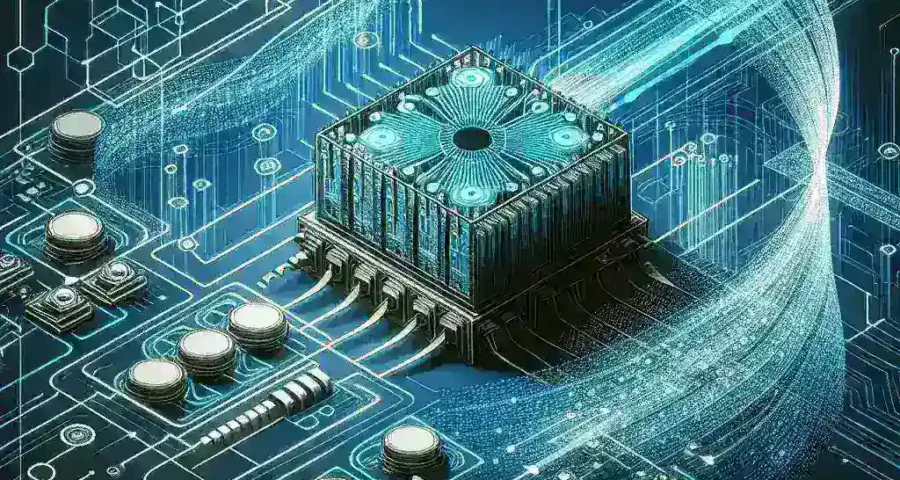Introduction to Spintronic Memory
As our world becomes increasingly data-driven, the need for faster and more efficient memory technologies is paramount. Enter spintronic memory, a revolutionary advancement that merges processing and storage capabilities, promising to eliminate the persistent data transfer bottlenecks that have long plagued traditional computing architectures. This article delves into the intricacies of spintronic memory, its historical context, benefits, challenges, and future implications.
The Evolution of Memory Technologies
To appreciate the significance of spintronic memory, it’s essential to understand the evolution of memory technologies. Computer memory has progressed through various phases:
- Magnetic Core Memory: In the 1950s, magnetic core memory was the backbone of computing. It was reliable but bulky.
- RAM and Flash Storage: The introduction of Random Access Memory (RAM) and Flash storage revolutionized speed and capacity, but these technologies still face limitations in data transfer rates.
- Emerging Technologies: With the advent of quantum computing and neuromorphic chips, the quest for faster and more efficient memory continues.
Understanding Spintronics
Spintronics, or spin transport electronics, leverages the intrinsic spin of electrons, in addition to their charge, to store and process information. This dual functionality presents several advantages:
- Lower Power Consumption: Spintronic devices can achieve higher efficiency, consuming significantly less power than conventional technologies.
- Increased Speed: By combining processing and storage, spintronic memory reduces the time taken for data transfer, enhancing overall system speed.
- Scalability: Spintronic devices promise to scale down to smaller sizes without a loss in performance, crucial for future computing demands.
How Spintronic Memory Works
Spintronic memory operates by utilizing magnetic states known as magnetic tunnel junctions (MTJs). These junctions consist of two ferromagnetic layers separated by an insulating layer. The key components include:
- Magnetic Polarization: Electrons exhibit two spin states, up and down, influencing how they interact with magnetic fields.
- Tunneling Magnetoresistance (TMR): The resistance of MTJs varies depending on the relative orientation of the magnetic layers, allowing for data storage.
- Spin-Orbit Coupling: This phenomenon enables the manipulation of electron spins using electric fields, enhancing the functionality of spintronic devices.
Advantages of Spintronic Memory
Spintronic memory offers a plethora of benefits that position it as a game-changer in the tech landscape:
- Increased Data Transfer Rates: By integrating processing and storage, spintronic devices can operate at much higher speeds, reducing latency and improving efficiency.
- Enhanced Durability: Spintronic memory is less prone to data loss and degradation, offering a longer lifespan compared to traditional memory solutions.
- Lower Heat Generation: This technology generates less heat, reducing cooling requirements and contributing to energy efficiency.
Challenges and Limitations
Despite the promising advantages, spintronic memory faces several challenges:
- Manufacturing Complexity: The fabrication of spintronic devices requires precise techniques and materials, complicating mass production.
- Cost: High production costs may hinder widespread adoption, especially in consumer-grade products.
- Integration with Existing Systems: Ensuring compatibility with current technologies remains a significant hurdle.
The Future of Spintronic Memory
The future of spintronic memory looks promising as researchers continue to explore its potential. Predictions for the next decade hint at:
- Widespread Adoption: As manufacturing techniques improve and costs decrease, spintronic memory may become mainstream in both consumer electronics and data centers.
- Advancements in AI and Machine Learning: The high-speed processing capabilities of spintronic memory can enhance AI algorithms, leading to faster decision-making and improved outcomes.
- Integration with Quantum Computing: Spintronic technologies could play a vital role in the development of quantum computers, offering solutions to current limitations.
Real-World Applications
The implications of spintronic memory extend to various sectors:
- Data Centers: Enhanced speed and efficiency can optimize data storage solutions and cloud services.
- Consumer Electronics: Imagine smartphones and laptops with instant data access and significantly improved battery life.
- Automotive Industry: Self-driving cars require rapid data processing capabilities, making spintronic memory ideal for this application.
Conclusion
Spintronic memory represents a transformative shift in how we approach data storage and processing. By effectively combining these functions, it promises to eliminate data transfer bottlenecks, paving the way for faster, more efficient computing solutions. As we move forward, the ongoing research and development in spintronic technologies will undoubtedly shape the future of computing, influencing everything from personal devices to large-scale data centers.
Call to Action
Stay informed about the latest advancements in technology and explore how innovations like spintronic memory can impact your digital experience. Join the conversation and be part of the tech revolution!


Leave a Reply